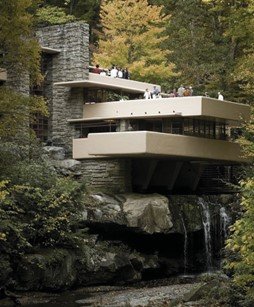Arq. Giorgos Varelas Grecia
Since the beginning of humanity man keeps defining his relationship with Earth. Earth is the field of the struggle for evolution of the human beings, our shelter, our mother, the base of our civilizations, our Home.
Architecture always reflects this relation. It’s the indicator of our understanding of the natural laws. The global and inevitable physical laws like gravity, changes of seasons, weather and light, sustainability, earth’s biological structure reflected in energy fields. It’s also an indicator of our morality in terms of our relation and respect of the natural environment and its resources (food, water, energy, materials). But it finally reflects our evolution and the quality of our civilization, the balance between spirituality and materialism which is infallibly captured in aesthetics. Saying that, we must realize that aesthetics isn’t merely a side note, they’re as important as anything else. Ethics and aesthetics are one.
Leonardo Da Vinci combined art, science, engineering and aesthetics, that kind of unity is needed once again.
Vitruvius, the Roman architect and engineer, known for his multi-volume work entitled “De architectura”, originated the idea that all buildings should have three attributes: firmitas, utilitas, and venustas (“strength”, “utility”, and “beauty”). These principles were later widely adopted in Roman architecture.
Since that era, that man inhabited the caves, searching for a cover from wilderness. up to nowadays there was a great evolution in these 3 Vitruvian attributes. It all started when initially man invented the “primitive hut”. A first “manasial” step, an artificial imitation of the cave and the woods which later evolved to the classical Greek and Roman temples, the Gothic and Renaissance architecture, exploding to today’s megastructures and skyscrapers.
During the history of this architectural evolution, structure, utility and beauty were expressed in several ways and forms but at the very end architects follow two distinctive paths. They either over-impose their work to the natural environment, declaring a statement of human logic, and clarity to the abstractness of nature, or they either cooperate with the abstract, becoming fluid, humble and camouflaged in the wilderness.

For example, “Fallingwater”, a private house designed by Frank Lloyd Wright is a masterpiece both for its dynamism and for its integration with its striking natural surroundings. It has been described as an architectural tour of Wright’s organic architecture. The design of Fallingwater, is characterized of interpenetrating exterior and interior spaces and the strong emphasis placed on harmony between man and nature.
The organically designed private residence was intended to be a nature retreat for its owners. The house is well-known for its connection to the site. It is built on top of an active waterfall that flows beneath the house.
The fireplace hearth in the living room integrates boulders found on the site and upon which the house was built—a ledge rock which protrudes up to a foot through the living room floor was left in place to link the outside with the inside. The stone floors are waxed while the hearth is left plain, giving the impression of dry rocks protruding from a stream. Integration with the setting extends even to small details. For example, where glass meets stone walls no metal frame is used; rather, the glass and its horizontal dividers were run into a caulked recess in the stonework so that the stone walls appear uninterrupted by glazing. From the cantilevered living room, a stairway leads directly down to the stream below, and in a connecting space which connects the main house with the guest and servant level, a natural spring drips water inside, which is then channeled back out. Bedrooms are small, some with low ceilings to encourage people outward toward the open social areas, decks, and outdoors.
Wright had initially planned to have the house blend into its natural. In doing so, he limited his palette to two colors, a light ocher for the concrete and his signature Cherokee red for the steel.
A contrary example is the “Villa Savoye”, which is probably Le Corbusier’s best-known building from the 1930s. The villas designed by Le Corbusier in the early 1920s demonstrated what he termed the “precision” of architecture, where each feature of the design needed to be justified in design and urban terms. This house had an enormous influence on international modernism.
The building doesn’t touch the ground. It is supported of ground-level pilots, elevated from the earth and allowing the garden to be extended to the space beneath.
The nature is artificially adapted to the interior. The functional roof serves as a garden and terrace, reclaiming for Nature the land occupied by the building.
Its crystal-clear facades in bright white color, with the long horizontal windows for illumination and ventilation come in absolute contrast with the landscape. A clear prism, perfect in proportions, set out using the principal ratios of the Golden section (in this case a square divided into sixteen equal parts, extended on two sides to incorporate the projecting façades) stands alone in the landscape with such a purity and clarity. It’s the triumph of logic sitting in the middle of its French countryside locus.
Similar opposite manners are registered in such many examples:
The artificial islands on the coast of Dubai in the United Arab Emirates (over imposing both in the ocean and the sky) versus the humble settlements of Adrère Amellal Ecolodge, in Siwa, Egypt, becoming a single entity with their environment, camouflaged by the color of the sand.
The mud houses of Ancient Egypt, melted into Nile’s floods against contemporary Mega-cities all over the world.
Subterranean houses buried into the ground against crustal clear prisms exploding into the sky.
These examples indicate the struggle of man to dominate to the landscape or cooperate with it. The eagerness against humility, the logical against the irrational.
Whatever the path is, man constantly seeks a balance between his understanding and the order of nature. He constantly tries to be in dialog with his surround, to sanctify, consecrate and conquer the arbitrary.
The quality of the result finally reveals the quality of his struggle, the motives and the ethics behind.
Man by doing so is exploring his boundaries, he creates Architecture, Art and finally Civilization.
Sources:
https://quotepark.com/quotes/1877695-gianni-agnelli-i-even-believe-aesthetics-are-like-ethics-somethi/
https://feedingtrends.com/quotes-about-aesthetics-art-beauty-pleasant
https://en.wikipedia.org/wiki/Vitruvius
https://en.wikipedia.org/wiki/The_Primitive_Hut
https://en.wikipedia.org/wiki/Fallingwater
https://en.wikipedia.org/wiki/Villa_Savoye
https://www.architonic.com/en/project/saunders-architecture-squish-studio/5103766
https://www.collater.al/en/ncaved-underground-house-greece-mold-architects
